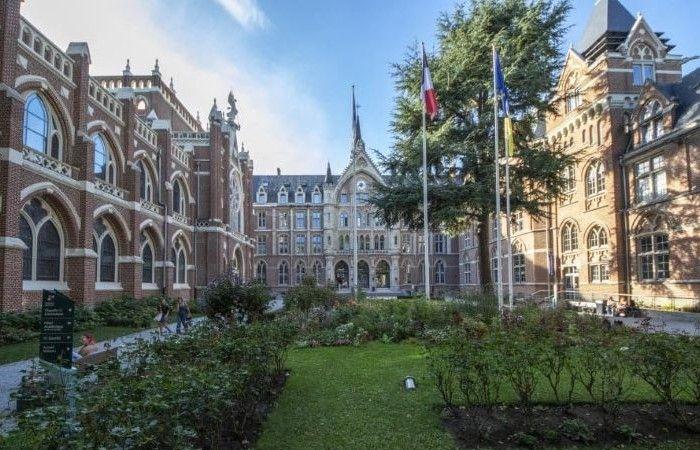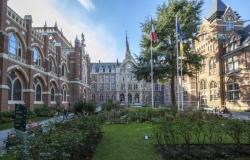Projects
The university establishment successfully tested the reconditioned servers on initial uses. And in fact a map of its CSR arsenal, making it possible to extend the lifespan of infrastructures.
AdvertisementThe largest establishment of the Catholic University of Lille, the Catholic Institute of Lille, which employs around 1,000 employees and 2,000 teachers and temporary workers, has added reconditioned servers to the range of options at its disposal when renewing equipment. . And, after initial conclusive experiments, even extended the use of these second-hand machines.
It all began with the arrival of Quentin Patou at the Institute, just four years ago. The director of digital development then finds an infrastructure approaching obsolescence and four modernization options designed by his predecessor: outsourcing to a host, moving to the cloud, transitioning to hyperconvergence or a modern virtualized infrastructure. “I took over the site with, at the time, servers 5 to 8 years old, at the end of their life, and housed in gray rooms, not fully respecting good practices in this area. » One of the main objectives of the manager – at the head of both the support IS and the educational digital tools – is to increase the availability of the infrastructure, aiming for a PRA type architecture, while the Institute then bases its business continuity on traditional backups.
A third of the price of new
Quentin Patou then works on the different possible technical orientations, comparing the TCO over 5 years. This makes it possible to quickly rule out the use of the cloud, the cost of which is 3 to 4 times higher than a more traditional choice. The Institute chooses to deport half of its infrastructure to a third-party state-of-the-art data center and to keep the other half in its most modern computer room, the two parts being synchronized in real time via two fiber loops operated by the university establishment. That is 5 servers on each site, running around 300 VMs. At the same time, the network infrastructures (250 switches and 600 WiFi terminals) are also modernized.
Two years ago, to reduce costs, but also to find new levers in its CSR policy (see box), the Institute turned for the first time to reconditioned servers. In this case for a cluster of three machines ensuring real-time metrology of the university’s software-defined network. “With this approach, we achieved a price of around a third of the price of new. And, also in terms of maintenance costs, this option turned out to be more interesting,” underlines Quentin Patou. The use case is particularly well suited to reconditioning, the network infrastructure not being expected to evolve enormously over 6 or 7 years and the monitoring application not requiring an extreme level of performance. With the support of its third-party maintainer, Evernex, the Institute, however, takes the precaution of replacing the SSDs of the machines and selecting models associated with a large fleet of spare parts. “Unlike manufacturer maintenance, third-party maintainer prices are stable. What’s more, in both cases it is the same technicians who intervene! », continues the manager, who speaks of an invoice divided at least by two on the material maintenance aspect.
AdvertisementAvoiding the planned obsolescence of manufacturers
Since this trial run, the Institute has found new equations where the use of reconditioned servers is justified. Particularly for its new site in Issy-les-Moulineaux, in the Paris region, where the Institute has been welcoming students since September (800 to 1,200 are planned). “Our video surveillance service provider offered us a server to host this application, at the manufacturer’s list price,” says Quentin Patou. For this application that requires little CPU and RAM, I proposed a more powerful reconditioned alternative, associated with unlimited on-site maintenance. » Result: a price divided by four, going from 12,000 to 3,000 euros. An option welcomed positively by the general resources of the University. The server in question has been in production for about a year.
Quentin Patou, director of digital development: “on virtualized architectures, reconditioned is a very interesting option. » (Photo: DR)
For the CIO, reconditioning amounts to “adding controlled hardware bricks to environments that do not necessarily require the most recent technologies, then bringing them to life over time without scheduled revision. » In his eyes, opting for a third-party maintainer like Evernex not only makes it possible to unify the contractual approach to maintenance on the different hardware bases, but also to avoid pressure from manufacturers, who will push for the renewal of platforms rather than their maintenance over time as long as they cover the need.
Extend the lifespan of virtualized infrastructures
These first experiences are now pushing the director of digital development to think about extending the uses of reconditioned products. Especially since the feedback is reassuring regarding the reliability of the equipment: “the servers are tested before unpacking and guaranteed for one year by Evernex. Since they were put into production, the reconditioned equipment we use has only caused two failures: one affecting a battery protecting the Raid cache, the other affecting a hard drive.” No impact on production. Which, for the manager, makes reconditioning an option to extend the life of its production infrastructure. “In 2025, it will be 5 years old. However, virtualized architectures often have increasing memory requirements. In this configuration, reconditioned is a very interesting option,” assures Quentin Patou.
Rely on the CSR policy
Firstly because it allows, by adding around 1.5 TB of RAM to the cluster, to extend its lifespan, therefore to postpone a costly migration. On the other hand, opting for reconditioned equipment to expand the cluster allows access to machines of the same generation as those already in place. “The integration is therefore simpler, because the machines will conform to the rest of the farm,” notes the head of the Institute.
Often still viewed with suspicion by many companies, the use of reconditioned servers has been well accepted within the university establishment welcoming around 15,000 students. “You have to find the use case that makes sense,” underlines the director of digital development, adding that the CSR policy is a more important point of support to convince internally than the sole aspect relating to lower costs. Especially since hardware is, most of the time, only a minority component of an IT department’s costs, far behind the HR budget or software licenses.
Article written by

Reynald FléchauxEditor-in-Chief CIO
Follow the author on Twitter








